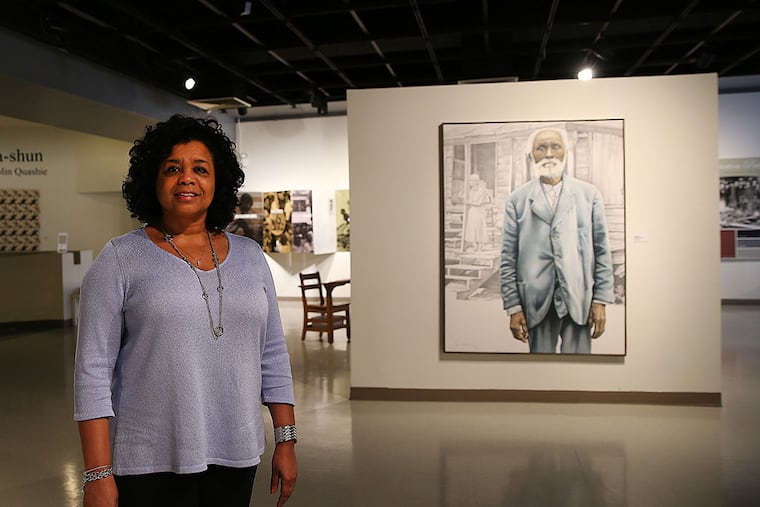A guide to some of Philly's vibrant black history

IN THE 19th century, before the Civil War, Philadelphia had one of the largest free black communities in the United States.
Many of those free African Americans — wealthy businessmen, ministers, caterers, barbers and women who were teachers, writers and suffragists — all played a role inthe fight to end slavery.
On May 14,1838, the Pennsylvania Anti-Slavery Society dedicated its new Pennsylvania Hall as a meeting place. The society was founded by both black and white abolitionists including John C. Bowers, Robert Purvis and James and LucretiaMott.
Only three days after it opened however, an angry white mob who did not like black and white men and women meeting together burned the hall down on May 17. A Pennsylvania historical marker stands at the former hall on 6th Street, just south of Race.
The thousands of delegates and guests in town for the NAACP's 106th Annual Conventionwillfind Philadelphia is a virtual gold mine for African-American history and cuisine, but some of it is difficult to locate. Here's a brief guide:
The African American Museum in Philadelphia, a short walk from the Pennsylvania Convention Center.
Currently "Plan-Ta-Shun," a work by the artist Colin Quashie is on exhibit through Aug. 16— an expansive collection of photographs and paintings that incorporate modern-day marketing with images of enslaved black people.
For instance, Quashie riffs on J. Crew ads by labeling his works J. Crow (for Jim Crow). One photo shows a photo of a former enslaved man with knotted scars on his back. The J. Crow ad blares: "Solids, with Stripes."
Another has an image of Henry "Box" Brown, who escaped slavery by shipping himself to Philadelphia. It's shown as an ad for FledX, but the X is picture of a Confederate flag.
The museum is at 701 Arch St. 215-574-0380 or go to www.AAMPMuseum.org.
Charles L. Blockson Afro American Collection at Temple University.
Many of the blue historical markers noting important African-American sites in Philadelphia were erected by the Pennsylvania Historical & Museum Commission.
But Blockson, 80, is credited with much of the research, legwork and intense advocacy for getting those markers in place.
The bulk of his collection, some 30,000 items, are at the Blockson Collection at Temple University's Sullivan Hall.
But a couple of items that belonged to Harriet Tubman, a shawl and hymnal book, are headed to the new National Museum of African American History and Culture set to open in Washington, D.C. in 2016.
The Blockson Collection is a quick cab ride away. It is open 9 a.m. to 5 p.m. Monday through Friday. 1330 Polett Walk; Sullivan Hall. 215-204-6638.
Mother Bethel African Methodist Church, founded by the Rev. Richard Allen in 1787, was the first church established by black people in America. Allen and the Rev. Absalom Jones led other black parishioners out of St. George's Methodist Church because of racial seating rules. There is a museum in the church at 419 S. 6t hSt. www.motherbethel.org.
St. George's United Methodist Church, in Old City, is the church that licensed Richard Allen and Absalom Jones as ministers. The church, located at 235 N. 4th St. next to the Benjamin Franklin Bridge, also has a museum that tells the story of Allen and Jones' time at St. George's. 215-925-7788.
Johnson House, 6306 Germantown Ave. This National Historic Landmark is one of the few remaining Underground Railroad stations in Philadelphia open to the public. www.JohnsonHouse.org.
Places to eat:
Keven Parker's Soul Food Cafe is located only steps from the Convention Center at the Reading Terminal Market. It promises "feel good, homestyle" Southern cuisine. 51 N. 12th St. 215-625-0650.
Ms. Tootsie's Restaurant Bar & Lounge on South Street near 13th, just a block from Broad Street, a/k/a Avenue of the Arts. Patrons swear by the crab and macaroni and cheese balls. There's also the golden fried chicken and sweet-potato cheese cake. 1312 South St. 215-985-9001.
Warmdaddy's Restaurant also offers soul food at the Riverview Plaza. You may need a cab to get there for its "Real Southern Rhythm & Blues experience." 1400 S. Columbus Blvd. 215-462-2000 or go to www.warmdaddys.com.
@ValerieRussDN